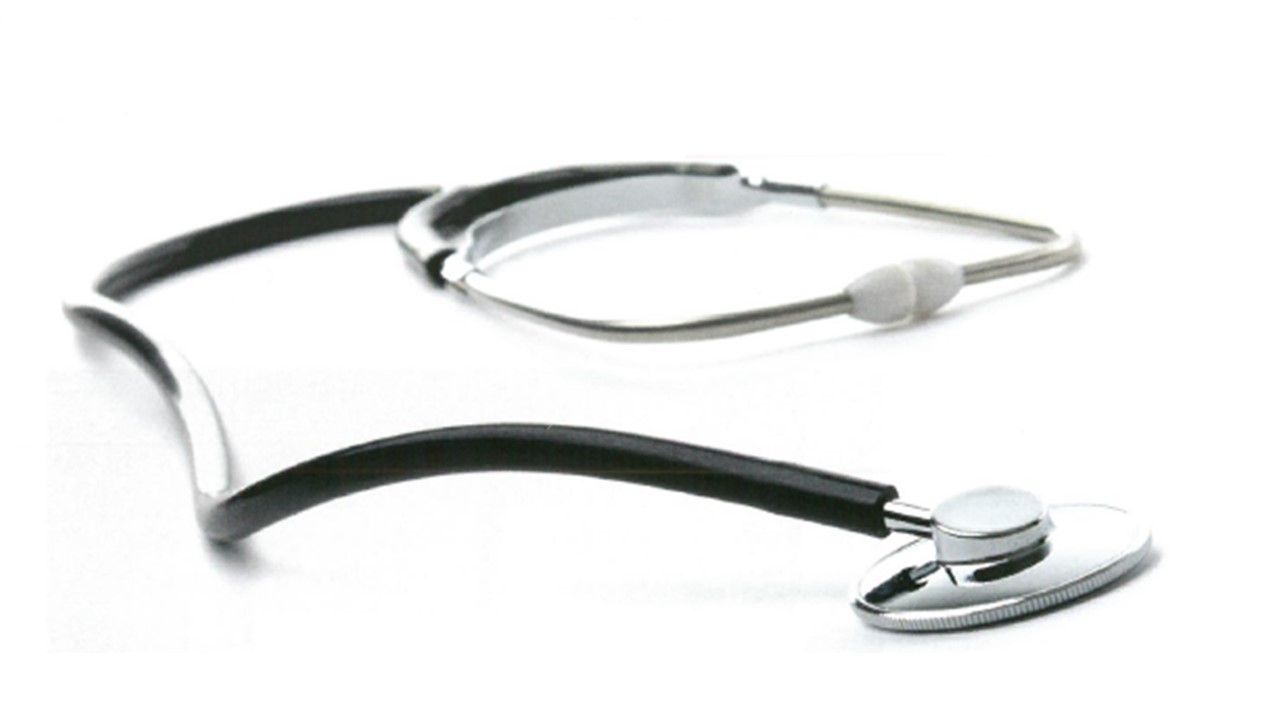
The article originally appeared in the January/February 2014 issue of Museum magazine, a benefit of membership with the Alliance.
An adapted excerpt from Museums On Call: How Museums Are Addressing Health Issues, a report from the American Alliance of Museums.
For years, museums have demonstrated their public value as educational providers, community anchors and stewards of our national heritage. They’ve also earned a reputation for driving tourism, creating jobs, attracting businesses to the community, and serving as a source of immense civic and community pride.
As society has changed, so has the work of museums. Museums are facilitating job training programs, celebrating cultural diversity and awareness, teaching English as a Second Language classes and serving as locations for supervised visits through the family court system.
But health care?
In fact, museums are playing a significant role in many health care issues. Adapted and excerpted here for publication in Museum– with special contributions highlighting trendsetting programs–the Alliance report Museums On Call: How Museums Are Addressing Health Issues showcases some of the important ways that museums are contributing to health care. (For the complete report, please go to aamus.org/advocacy.)
All around the country, museums are helping patients, training medical professionals, and educating the public about health and wellness issues. Following is an introduction to 10 aspects of the health care field in which museums are making significant contributions.
Alzheimer’s
Approximately 5 million Americans have been diagnosed with Alzheimer’s disease, and 1 in 8 people ages 60 and older report memory loss or confusion. Museums are stepping up to serve this growing demographic. Many museums have developed partnerships with their local Alzheimer’s Association chapter, offering special tours for adults with memory loss, facilitating hands-on artmaking with art therapists and providing museum staff with specialized training on how to trigger memories using works of art as prompts. In some cases, artists and museum educators travel to memory care residences to draw, paint, sculpt and print with patients. For example, staff from the Hyde Collection in New York was trained by the local Alzheimer’s Association chapter for its “Memories in the Making” program, in which participants use conversation prompts such as artwork to create imagery and induce memories.
The program is conducted onsite and as outreach to nursing homes and residences. Botanic gardens have worked with individuals with dementia and their care providers to provide olfactory and tactile
experiences. Participants create objects, such as a fragrant sachet, that serve as a cue for future conversation and interaction. Following these programs, participants report a lasting sense of satisfaction, calm and an increased willingness to converse.
Autism
One in 88 American children is estimated to be on the autism spectrum, and an estimated 5 percent of children 7 and under have a disability or special need. These children may have special challenges with social interaction, sensory processing, verbal and nonverbal communication, and repetitive behavior.
Many museums are leading the charge in creating programs for families facing these challenges. Some children’s museums open early to offer a quieter, less crowded experience for these children and their families or offer a summer art camp for children with special needs. Others carefully monitor the building temperature or adjust the lighting in some areas to create a more sensory friendly environment.
Many museums also utilize multiple learning styles, creating visual representations of what visitors can expect to see and do, in order to help parents, prepare their child and minimize unfamiliar and unexpected experiences. These museums also train their staff to understand what to expect, how to react and what community resources are available to help these visitors.
Some children create collaborative art projects focusing on building self-expression and communication with peers and teachers. In one program, educators saw marked improvement in individual students’ creative expression, an increased comfort level in handling transitions and an awakened openness to new tactile materials. Museum educators have worked with teachers, parents, paraprofessionals and site coaches on ways to utilize artmaking as a regular communication tool for students.
Disease Prevention
Museums are also making a difference in a wide variety of disease prevention efforts. In some cases, institutions collaborate with medical professionals and researchers. For example, the Invertebrate
Zoology Department at the Cleveland Museum of Natural History works with medical providers to identify bedbugs and other insects. The Field Museum in Chicago analyzes pathogens and parasites in birds and small mammals to help the Centers for Disease Control and Prevention understand and address emerging health threats.
Other institutions work directly with community members to meet their needs. Science Factory Children’s Museum in Eugene, Oregon, hosts a whooping cough booster shot clinic for adults in partnership with Lane County Public Health.
The Arizona Science Center in Phoenix has a National Institutes of Health/Science Education Partnership
Award funded project in which middle school students replicate a computer sorting massive amounts of data and identifying disease patterns to determine appropriate cancer treatment. The museum also offers visitors the chance to be “Disease Detectives” and has several stage presentations encouraging audience involvement in fighting microbes and viruses.
Health Literacy
As well-known providers of lifelong learning, museums educate communities about health care issues. At EdVenture Children’s Museum in Columbia, South Carolina, an anatomy and physiology exhibit takes the form of a 40-foot boy named EDDIE. The museum uses this exhibit and other programs to educate multigenerational family audiences about health and chronic diseases, including cardiovascular disease, diabetes, and cancer.
Museums also play an important role in surveying the public about their perceptions, concerns, and wishes surrounding health care issues. For example, the Spencer Museum of Art at the University of Kansas, Lawrence, has gathered such data, providing results in an interactive exhibit.
Hospital Outreach
Art, music, poetry, and theater have all been proven to deliver profound healing benefits, and museums are making a significant contribution in this area. Hospital patients around the country are benefiting from therapeutic programs such as art therapy, bedside artmaking, and art videos.
For example, a museum educator might bring a work of art from the museum’s collection and lead a discussion with patients. Works of art are carefully selected for imagery that is calming, meditative and uplifting, and are designed to serve those with varying degrees of fear, distress and physical pain. Art therapists with specialized mental health training work in collaboration with museum educators and patients including those with brain and spinal cord injuries, orthopedic injuries and amputations to promote coordination, dexterity, and speech. (See below for a case study.)
Medical Training
The ability to observe carefully, describe accurately and then interpret what one sees is essential in clinical diagnosis. Because these skills are also requisite in the visual arts, museums began partnering with medical schools to help train the next generation of medical professionals.
Museums play an important role in teaching medical students, nursing students, and other medical professionals to develop observational skills that can aid in proper diagnoses of patients. Professional auditors for the Society of Quality Assurance (SQA), which oversees the pharmaceutical industry, have eagerly enlisted museum educators to help SQA staff develop skills such as careful observation, asking open-ended questions and audience assessment.
One medical student described her initial skepticism that her observational skills could improve by looking at the paintings. But after painstakingly considering details in photographs of patients, she was a believer. “I paid more attention to colors, shapes, and sizes of skin blotches, lesions and other conditions,” she said.
Mental Health
Mental health and mental illness have long been difficult topics of discussion. Museums offer exhibits and other programs that help to break down these barriers. Museums are also partnering with mental health agencies to host clients as volunteers, exhibiting their art and holding public programs on art and mental wellness.
Military And Veterans Health
Museums are extremely proud of their collaborations with military personnel and veterans. Museums partner with Veterans Administration hospitals and make outreach visits to soldiers with combat-related
injuries, including traumatic brain injury and posttraumatic stress disorder. A program might involve a specially trained museum educator providing a very brief talk about a work from the museum’s permanent collection, guiding the participants in a hands-on activity related to the work and encouraging exploration.
Nutrition and Wellness
Museums have also taken a leading role in educating the public about health, nutrition and the benefits of physical activity. Some museums participate in multicultural health fairs, plant community vegetable gardens, offer walking tours and promote healthy eating. Many also have exhibits related to human physiology, while others discuss the history of food, changing trends in the food industry and how to make informed choices by reading nutrition labels.
Visual Impairment
The Art Beyond Sight Collaborative recognizes that art can address many of the daily living issues faced by people who are blind. Museums have embraced this concept by designing tactile exhibits and specialized touch tours with multisensory verbal descriptions for the blind and persons with low vision. The Walters Art Museum, for instance, has a long-term partnership with the Maryland State Library for the Blind and Physically Handicapped, providing touch tours of sculptures combined with verbal description tours. In addition, many botanic gardens have developed specialty tours for groups with low vision and other special needs, including hands-on activities, specially designed multisensory tours, and even specialized self-guided experiences.
Art Beyond Sight has also been working to involve the next generation of museum professionals through its Disability and Inclusion Curricula. Museum studies programs at a number of universities are collaborating to develop methodologies and content related to inclusion and accessibility for future staff and decision makers at cultural institutions. Museums play an important role in addressing numerous health issues, and the public is warmly embracing–and greatly benefiting from–these initiatives.
Continuing to build on their longstanding commitment to public service, many museums have found their service in health care helps them deepen relationships in their community. “The more relevant we are to our community, the more likely our work will be funded and the more likely we can expand our work and serve more people,” explains Michelle Lopez, manager of the “ArtAccess” program and Autism Initiatives at the Queens Museum of Art in New York.
Participating in health care also helps the museum reach a more diverse population. “Other community organizations may serve a specific race, religion, gender, age group or income level, but the hospital serves everyone,” Lopez says.
These collaborations lead to good publicity for the museum, bringing awareness to an audience that typically does not or cannot visit the museum in person. Great Plains Zoo and Delbridge Museum of Natural History in Sioux Falls, South Dakota, launched the nationally recognized “ZooTV” as part of an innovative partnership with Sanford Health in 2009. Using 15 cameras throughout its 45-acre campus, the zoo broadcasts real-time, live animal images to the hospital system’s patient rooms and clinic
waiting areas. This relationship allows the zoo to conduct its mission of connecting kids with animals in an even bigger way, showing monkeys scurrying through their exhibit and closeup shots of giraffes eating.
This innovative program has received widespread media coverage from NBC Nightly News to USA Today, focusing on the healing power of nature and the creativity of the partnership, which also brings zoo educators to teach critically ill kids several times a week in the Sanford Children’s Hospital. In addition to getting kids to the zoo, the zoo is constantly thinking of how it can bring the zoo to kids. “ZooTV” not only provides a live feed featuring animals like penguins and tigers but allows patients to get a sneak peek at behind-the-scenes zookeeper work. Participants take away a sense of why these animals are important and how they fit into our world.
Patients and their families aren’t the only ones benefiting from these cameras. Zookeepers are able to remotely monitor animals giving birth or the introduction of new animals. Significant zoo births–including a baby rhino, Amur tigers and reticulated giraffe–were monitored through the cameras.
–Jess Poncelet, Marketing Coordinator Physician’s Assistant Program Milwaukee Public Museum
Can a tattoo help a physician understand a patient’s medical condition? What are the potential health effects of religious dietary restrictions, such as veganism?
These are just a few of the questions pondered by students as they experience the Milwaukee Public Museum’s Physician’s Assistant program, a new partnership through which students at Carroll University learn in a museum setting how to relate to patients of other cultures or religions.
MPM is a working research institution that is continually striving to forge new partnerships with other educational facilities. MPM’s PA program came to be when the museum’s academic dean, Ellen Censky, approached Carroll University to discuss ways in which the museum could integrate with the school’s educational objectives, and the university indicated a need to help students broaden their perspective regarding the influence of culture on health.
Through the lens of medical anthropology, Dawn Scher Thomae, MPM’s anthropology collections manager, developed a program through which students are able to learn how culture and health care are intertwined and how culture plays a major role in shaping one’s health and health beliefs. Given onsite at MPM, the program begins with a short presentation, followed by a walk through select exhibit galleries chosen to spark discussion on topics such as the “tattoo question.”
From an engagement perspective, teaching within MPM’s exhibit galleries is an important component in the program’s success. “Students are fascinated and engaged due to the fact that we’re walking around and using case studies,” says Scher Thomae. “So many people are visual learners and showing them is a lot different than just telling them.”
When students see a specimen featuring tattooing in an exhibit case, for example, they are able to make a relatable connection between the past and the present, and to themselves, in a way, they might not through a lecture or text.
Once these connections are made, students can apply these same ideas to their patients and better understand how cultural background can influence patient health.
–Carrie Trousil Becker, Communications Director Mental Health: Stigmas, Stereotypes, and Solutions Harriet Beecher Stowe Center Hartford, CT
The Harriet Beecher Stowe Center offers programs for a wide range of audiences, creating a link between the center’s rich historic context and contemporary issues, and inspiring action for positive change. In the award-winning Salons at Stowe series, frequent author events and book discussions, and interactive house tours, the center creates a “safe place” for constructive dialogue on what can be uncomfortable topics. Frequent programs on bullying, stereotyping, racism and cultural diversity led to the initiation of programming on issues of mental health in American society. In 2013, the center presented a Salon at Stowe entitled “Mental Health: Stigmas, Stereotypes and Solutions,” featuring representatives of the National Alliance on Mental Illness and Hartford’s Institute of Living to consider the prevalence of mental illness, and the availability and accessibility of treatment and support for families struggling with mental health challenges. As with all Salons, the point of the discussion was to identify solutions and provide actionable ideas for the audience. Ideas generated included: mental health awareness curriculum in schools; understanding the collective cost of stigmatization; teaching empathy; and legislative advocacy for mental health services. Programming on this topic and related issues has deepened the center’s relationships with community organizations and individuals concerned with these issues and attracts an audience that reflects our community’s diversity.
– Mary Ellen White, Director of Marketing Veterans Wellness Recovery Program Ormond Memorial Art Museum and Gardens Ormond Beach, FL
How does a museum founded in the 1940s as a tribute to veterans remain relevant to that population today?
Looking for a way to continue our commitment to veterans, the museum began an art outreach program for local veterans in 2010. We have provided more than 500 hours of art outreach to veterans in the greater Daytona Beach area working with the V.A.s’ Wellness Recovery Program–a transitional, educational initiative designed to assist veterans in reclaiming their lives.
Each month, we provide instruction and supplies for an hour-and-a-half art experiential at the Wellness Center facility. The projects are designed for successful outcomes in a nonjudgmental environment. The creative process is designed to relieve stress, reduce anxiety and restore a sense of balance and harmony. The program’s goals are for participants to improve leisure skills, experience satisfaction, and enjoyment, and improve attention spans, memory and social skills. The benefits to the museum have been media coverage in nontraditional outlets, a financial response from certain donors, increased support from the military/veteran community and an increased presence at our annual Veterans
Day Tribute community event. –Susan Richmond, Museum Director Homegrown: Phipps Edible Garden Program Phipps Conservatory and Botanical Gardens Pittsburgh Families that eat together are healthier and communities where people know each other are stronger. So in an effort to help combat childhood obesity and benefit underserved populations in Pittsburgh, Phipps Conservatory and Botanical Gardens launched “Homegrown: Phipps Edible Garden Program” in 2013. Working to increase access to
fresh produce in food deserts, promote better food choices and improve the overall health of families and children while forging bonds among neighbors, the initiative provides mentorship, education, and resources, and establishes vegetable gardens at peoples’ homes.
Partnering with the local YMCA chapter in its pilot year, “Homegrown” first focused its efforts in the neighborhood of Homewood, equipping 10 households with a total of 24 raised beds and 391 square feet of growing space. As part of these efforts, Phipps also collaborated with Pittsburgh JobCorps to build and install the gardens, while giving students hands-on experience. Each participating family received these services, as well as soil, seeds, plants and gardening tools, free of charge. In addition to creating sites for cultivation, “Homegrown” seeks to hone beneficiaries’ skills and knowledge so that they can continue growing on their own. Covering everything from weed management to the culinary possibilities of Swiss chard, monthly organic edible gardening workshops, and cooking classes empower gardeners to realize their potential. Eventually, these new city gardeners will become teachers for others as they take their health into their own hands.
Charity Grimes Bauman, Community Outreach Coordinator, and Richard V. Piacentini, Executive Director

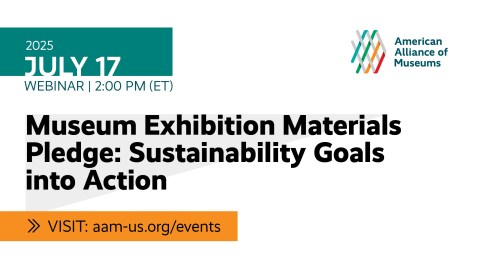


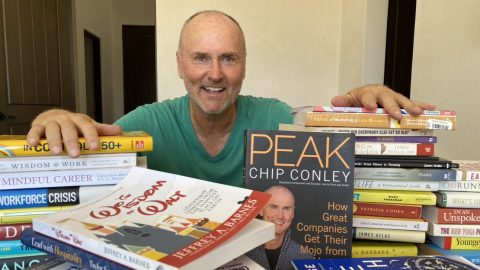
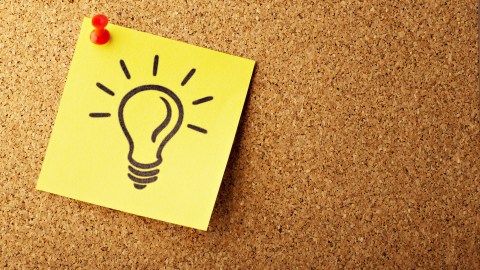
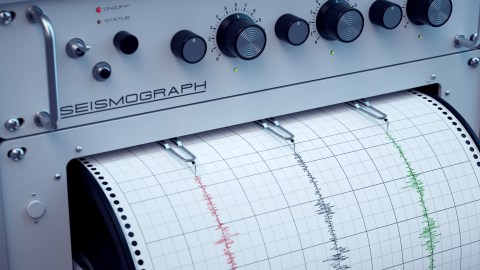
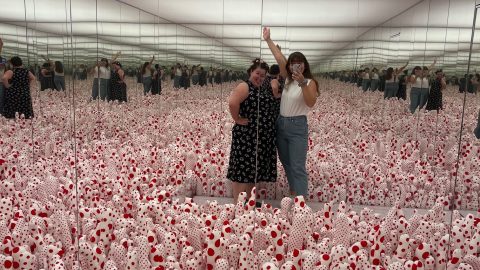
How can i get a copy of the full report?
Hello Tina,
I will follow-up with you via email regarding the full report. Thank you for reading!
Cecelia Walls
Content & Editorial Strategist